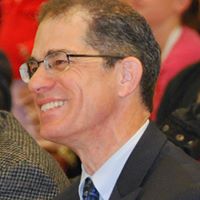Book Review: A Fresh Look at Grading & Reporting
in High Schools
by Sandra Herbst & Anne Davies
Four areas are
considered in Chapter 1: Preparing for
Quality Classroom Assessment:
- Determining learning destination;
- Researching expected quality levels;
- Planning to collect reliable & valid evidence of
learning; and,
- Collecting baseline evidence of learning.
Given the
multitude of standards or learning outcomes for any given high school subject,
the authors recommend that teachers group standards and describe them in
student-friendly language in order to provide clarity on learning
destinations. Researching expected quality levels involves three steps:
determining student samples or exemplars, establishing success criteria, and
designing rubrics. The authors emphasize
that a collaborative process with a clear protocol should be followed for all
of these steps.
 |
| Clear reading, writing, and math standards in student-friendly language |
In collecting
evidence of learning, teachers should triangulate
the evidence by taking into consideration the 3 sources of evidence
available in the classroom: “observations of learning; the products that
students create; and conversations between teachers and students.” (17) To ensure reliability and validity in
professional judgment, teachers should collect, over an extended time period
and from a variety of sources, several pieces of evidence of a learning
outcome.
The benefit of
gathering baseline evidence is that it “gives teachers a simple way to say ‘You
used to … and now you …’ or for students to say themselves ‘I used to … and now
I …”. (23)
 |
| From Growing Success, a diagram showing Triangulation of Data |
In Chapter 2, Activating and Engaging Learners Through Quality Assessment, the authors explore 4 assessment functions teachers can use to engage and activate students:
- Describing the learning destination and expected
quality;
- Involving students and providing time and support for
them to learn;
- Teaching to student needs based on assessment evidence;
and,
- Collecting reliable and valid evidence of learning.
With respect to
the first assessment function, Herbst and Davies emphasize that once students
are clear on learning outcomes and engage in the co-construction of success
criteria they learn the language of assessment and are better equipped to
self-monitor their progress and make adjustments for better achievement. They do caution though that “Students used
to receiving evaluative feedback – right, wrong, 65%, or 92% - may need time to
come to appreciate their role in the assessment process and learn how to
self-monitor, self-assess, and regulate their own actions.” (34)
 |
| For students inexperienced in self-assessment, a good starting point is overall ratings such as this |
Important
aspects of giving students the necessary time to learn are having them analyze
samples of student work, engaging them in self and peer assessment, and having
them communicate their evidence of learning to others.
There are 3
steps to using assessment evidence to teach to specific student needs:
determine what students know, compare this to what they need to know, and plan
ways to close the gap.
Validity and
reliability are ensured not only by the triangulation of evidence but as well
by the teacher allowing the student to also be involved in the process of
evidence collecting.
Chapter 3
outlines 4 tasks in the process of evaluating and reporting to others after the
learning is complete:
·
Finalize the collection of evidence of learning;
·
Making informed professional judgments;
·
Reporting using required format; and,
·
Involving students in the reporting process.
In the first
task, students select their best evidence in relation to the learning goals and
present it to their teachers along with explanations about why they think it is
proof of their learning. Herbst and
Davies provide a useful definition of informed
professional judgment: “The professional determination after a review of
evidence of learning present (not absent), of what has been learned and
achieved.” (57) With respect to the 3rd
task, the authors stress that reporting is a process, not just a one-time
event. It involves the pre-learning
planning by teachers, the learning time, and the aftermath.
You can visit the author's blog at http://blog.annedavies.com/
You can visit the author's blog at http://blog.annedavies.com/

